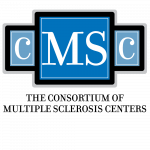Background: Updated prevalence estimates indicate that nearly 1 million Americans are living with MS including a large cohort of aging individuals. Given previous studies indicating 10-15% of individuals requiring wheelchairs for mobility, it is expected that durable medical equipment (DME) needs will exponentially increase in the coming years. Beyond and including DME, individuals with MS and significant disability need medically necessary complex rehabilitation technologies (CRT) including individually configured manual/power wheelchairs systems designed to meet medical and functional needs to achieve optimal level of function, wellness, and promote participation in communities. Challenges in obtaining CRT are notoriously numerous, and widespread with a reported end result of 82% of DME claims denied through Centers for Medicaid and Medicare Services (CMS).
The MAHA program serves over 100 individuals with MS and significant disability (EDSS > 7) focusing on improved quality and access to care. Deficiencies in acquisition of CRT for patients was observed resulting in long delays, and frustration of patients and providers. Complications were also noted due to delays, including falls and pressure injuries. Evaluation to delivery (E2D) times frequently exceeded 120 days beyond the evaluation (face to face visit) requiring a new evaluation per CMS guidelines. Limited national comparison data for E2D is available.
Objectives: To improve the process of acquisition of DME/CRT for patients resulting in decreased E2D time and increased provider/patient satisfaction.
Methods: In August of 2019 a cross-disciplinary team was formed including: MAHA program providers, Assistive Technology Professional (ATP) and a community Occupational Therapist (OT). All team members had extensive experience with MS. The ATP was employed by NuMotion, our regions most widely covered by insurers and largest supplier. Patients were given the choice of supplier or OT. Neither the providers nor OT had a financial relationship with the CRT supplier. Assessment of acquisition of CRT process revealed over 30 incremental steps. This assessment resulted in implementation of new process. Key aspects of implementation included simultaneous evaluation with patient, care partner, provider, OT and ATP in patients home or by telemedicine. Improved communication with weekly huddles, and an assigned point person who coordinated documentation, billing, and signatures, monitored E2D time and obtained patient/provider reports. E2D goal target was set for 90 days.
Results: E2D time was reduced by 38% with the average amount of days before implementation 132 verses 82 days. Qualitative information suggests positive provider and patient satisfaction.
Conclusions: Individuals with complex mobility/function needs benefit from appropriate CRT. More efficient access to CRT and patient/provider satisfaction is possible using a cross-disciplinary team approach.
[learn_press_profile]
